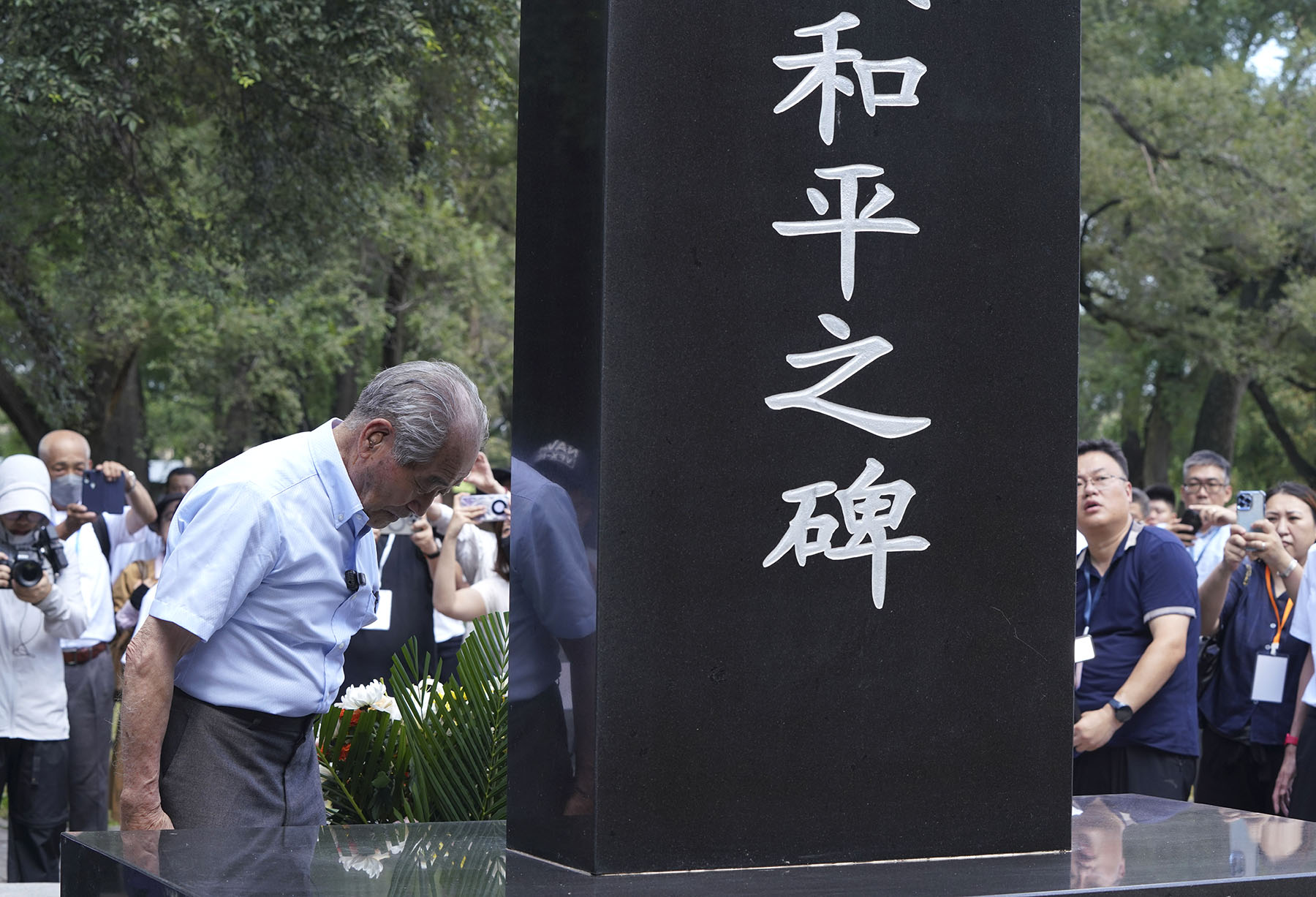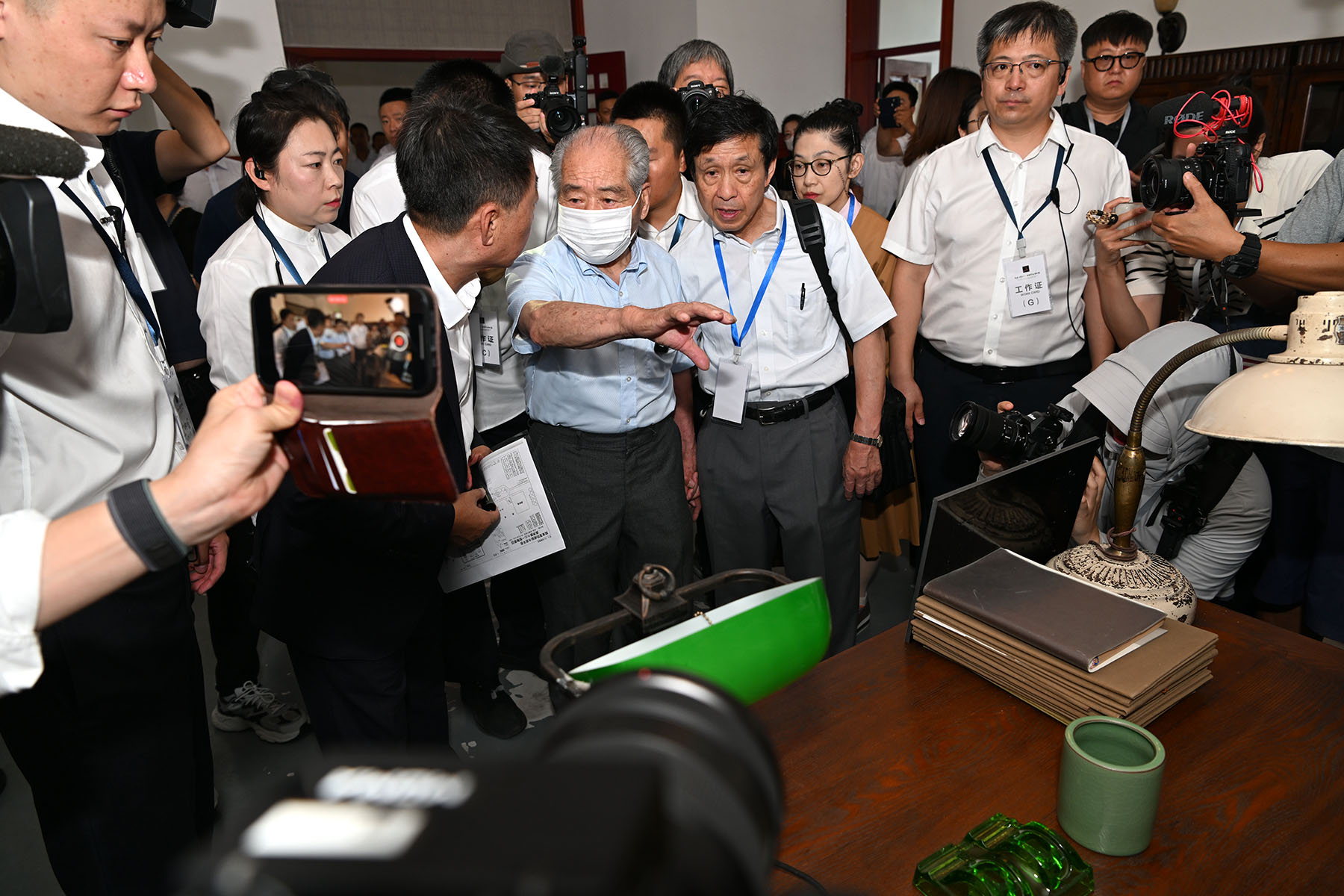
Hideo Shimizu, a former member of Unit 731, the notorious germ warfare detachment of the Imperial Japanese Army during World War II, stood with his head bowed and hands folded on Tuesday morning in front of the Apology and Peace Monument in Harbin, Northeast China's Heilongjiang province.
"I would like to express my sincere apologies and repentance to the Chinese victims, the victims of Unit 731, and the deceased," he said.
READ MORE: Former member of Japanese germ-warfare unit identifies war crimes in China
After 79 years, Shimizu, who is now 94, returned to Harbin, where Unit 731 was once located, to expose and testify to the crimes committed by his detachment during the War of Resistance Against Japanese Aggression (1931-45).
He boarded a flight from Osaka's Kansai International Airport on Monday morning and arrived in Harbin in the evening.
On Tuesday, Shimizu visited and identified the notorious Japanese force's old guardhouse sites, the headquarters building, the bacteriology laboratory, the special prison and the frostbite laboratory at the Museum of Evidence of War Crimes by the Japanese Army Unit 731, before publicly expressing his repentance at the museum's Apology and Peace Monument.
Shimizu was about 14 years old and among the last batches of Unit 731 Youth Corps members when he was sent to Harbin in March 1945. He spent more than four months witnessing the war crimes committed by his unit, including the cultivation of pathogens, human dissections and experiments on humans.
Unit 731 was a top-secret biological and chemical warfare research base established in Harbin in 1935.It was the nerve center of Japanese germ warfare in China and Southeast Asia. At least 3,000 people were used for human experiments by Unit 731, and more than 300,000 people across China were killed by Japan's biological weapons.
Shimizu recalled the day when he was taken to the herbarium inside the lab complex. "There were all kinds of human specimens inside — the heart, the stomach, the lungs. I was shocked by the brutality."

On Aug 14, 1945, Shimizu fled China with the retreating Japanese forces.
Before leaving China, Unit 731 tried to gun down all survivors and destroy incriminating evidence of the atrocities it committed.
After returning to Japan, Shimizu was haunted by the guilt of what he saw and what he was forced to participate in.
In 2016, he revealed his identity as a former Unit 731 member and began to expose the atrocities committed by the Japanese Imperial Army through public speeches and interviews, aiming to reveal historical truths.
"Historical facts cannot be covered up," Shimizu wrote in a signed article published on Monday in People's Daily. "I am determined to return to the site of Unit 731 before I die to express my deepest apologies to the Chinese people who had been hurt, and hope to arouse more people's reflection and vigilance, cherish the hard-won peace, and avoid the recurrence of the tragedy of war."
ALSO READ: New evidence further proves crimes of Japanese germ warfare unit
On Saturday, before departure from his home in Nagano prefecture, Shimizu told Xinhua News Agency that it was his "first return to China in 79 years" and he had two wishes.
"One is to sincerely pray for those who perished at the hands of Unit 731 and to apologize to their families, while the other wish is to learn more about the impact of the plague released by the Japanese Imperial Army in Harbin after the war, a topic on which there is little testimony in Japan," he said.
Jin Chengmin, curator of the Harbin museum, said that most of Unit 731's former members are now deceased.
"Shimizu is currently the only surviving member who is willing to expose the unit's crimes to the public, and he is likely to be the last Unit 731 member to return to Harbin. Before him, there were four who did the same," Jin added.
Contact the writers at zhouhuiying@chinadaily.com.cn


